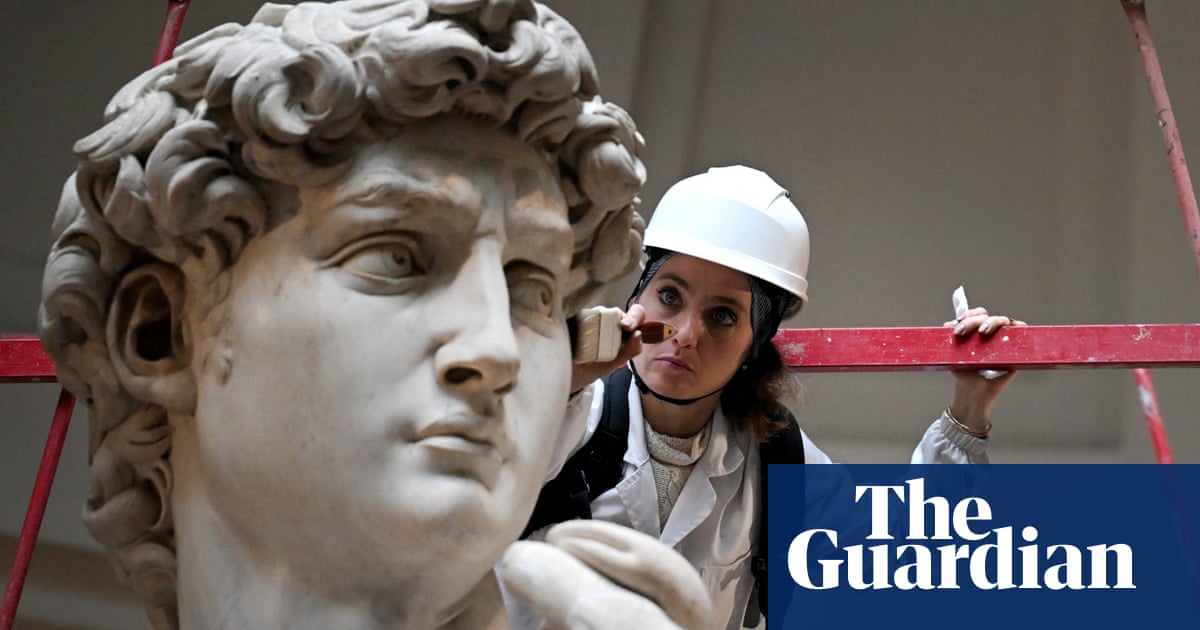
Michelangelo’s David is recognised as one of the most sublime works in the history of sculpture, but according to the director of Florence’s Accademia Gallery, dusting it is much like cleaning a bathroom.
“You know when you clean a bathroom, you clean and clean and think you’ve done a great job but then you spot some dust and wonder ‘where did that come from?’,” Cecilie Hollberg said on Monday. “This is what it’s like. Dust is everywhere.”
Once every two months, the Accademia Gallery’s in-house restorer Eleonora Pucci clambers up the side of scaffolding assembled around the 5.17-metre-tall figure and gets to work on dusting David’s marble locks and perfectly toned muscles, using a vacuum and fine brushes and cloths.
This week, journalists were granted privileged access to the process, and were warned not to distract Pucci while she worked.
“You have to be very careful not to get too close, but be close enough in order to be able to dust,” Hollberg said.
The trickiest part of the job, which takes at least half a day, is capturing the dust and spiders’ webs that lurk in David’s curls. The vacuum, with its soft-bristled brushes of various sizes, are used to tackle this part of the job. David’s face gets a good clean, too.
Pucci takes photos of the statue to check for signs of cracks or changes to its form. “We can say with absolute certainty that David is in good health and the dusting is also needed to ensure this is maintained,” Hollberg said.
The statue, which depicts the biblical hero armed with a rock and sling, was sculpted by Michelangelo between 1501 and 1504. Commissioned by the Opera del Duomo, it was originally intended to be placed on the roofline of Florence Cathedral.
But after Michelangelo presented his masterpiece, it was decided that David was too perfect for the cathedral and so it was positioned in front of Palazzo della Signoria, where it remained until 1873 when it was moved to what would later become the Accademia in order to protect it from damage.
The gallery, which opened eight years later, was essentially built around David, who stands under a halo-like dome.
The Accademia Gallery is the second most visited museum in Florence after the Uffizi Galleries, attracting more than 2 million visitors in 2023. On Mondays, it is closed for cleaning.
The continuous transit of visitors, sometimes as many as 10,000 a day, means conserving David and the gallery’s other masterpieces, including Michelangelo’s Slaves and Giambologna’s Rape of the Sabines, is of utmost priority.
Hollberg, who is of German origin, was the first director to draw up a schedule for the periodic dusting of David. Since becoming director in 2016, she has reduced group numbers and expanded opening hours to better manage visitor flow and prevent overcrowding.
She hopes to secure a new mandate after the current one expires in June. “This is a great place … it’s not so easy to find something to compare it to,” she said.












